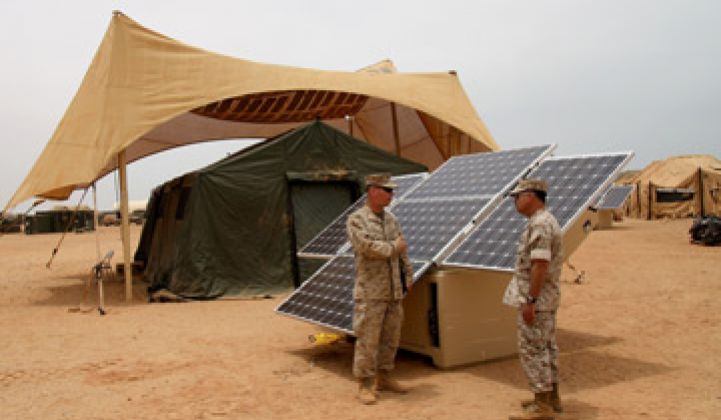ZeroBase Energy builds a portable, small-scale solar-powered energy hub that offers an alternative to diesel generators for a variety of applications and environments.
Henry Gentenaar, the co-founder and CMO of ZeroBase, along with his partner Zach Lyman, the CTO, have spent some time out of the U.S. with little access to power, diesel or otherwise, and were inspired to create their all-in-one unit. According to Gentenaar, their experiences out of the country and off-grid -- every installation was a complex custom job -- were "kind of brutal" with "a lot of inconsistency in service." But the company's ReGenerator is a product that "people understand -- people can get their head around this."
The germ of the idea and its initial development began at a custom yacht manufacturer, and that level of craftsmanship and marine-grade construction shows up in the ZeroBase product. True to the company's maritime background, Gentenaar claims that the generator's "composite housing can be flooded" without adversely impacting performance.
It's a simple idea, and as the price of solar continues to plummet, one can envision more applications opening up.
ZeroBase has been building these systems in the United States for three years and has shipped hundreds so far from their factory in Maine. The six-employee firm is backed by private equity firm Pegasus Capital Advisors.
The product is a "vendor-neutral system" that allows the user to "generate, manage and store power." The system comes with a baseline quantity of solar panels, and the number of panels can be upgraded as needed. Users can also attach small wind turbines or propane or diesel generators to the unit. There is an inverter as well as battery-based energy storage in the unit.
The system can be grid-tied if desired. In Gentenaar's words, "You could plug in a cell phone or a laptop to the unit or pull out a lot of power and power a building."
The base unit can generate 1.5 kilowatts and act as a hub for 10 kilowatts of external power assets like wind or diesel. Inside is the balance of system for a basic solar installation configured for quick connection and deployment. The unit accepts solar panels and inverters from a wide variety of vendors.
At $20,000 for a single unit in its simplest configuration, these are not exactly intended for the average homeowner. But they are being sold into the telecom industry for remote base station power, as well as military applications and to FEMA and the Department of Homeland Security.
The firm claims a one-year payback in some cases for off-grid telecom, and payback in a matter of months for certain military applications.
We recently had a guest post on this very topic from the CEO of another portable solar system, Jeff Lipton of Coyle Industries. Lipton went so far as to call this type of power a subset of distributed generation (DG).
While definitions of what comprises DG vary based on location, size, grid connectivity, and other factors, one consistent defining characteristic of DG is that it is power generation that is not centrally controlled by utility companies.
Lipton provided a long list of additional applications for portable renewables: remote construction and maintenance services, agricultural irrigation, outdoor recreation, emergency back-up power, rural community development (particularly in the developing world), and tactical military operation.
Lipton identified the ‘killer app’ for portable renewables as tactical military operations where pollution and cost aren’t even significant considerations. The big issue is security.
The U.S. military has declared a critical need to reduce fossil fuel dependency for both tactical security, and, in the long run, national security. The military consumes over 90 percent of the oil used by the U.S. government, with a fifth of that -- at least 90 million gallons per month -- consumed in Afghanistan and Iraq.
The military's demand for renewables is going to be one of the big green stories in the coming years. We'll be covering it in depth.



